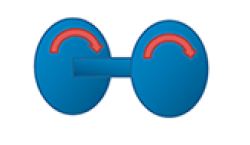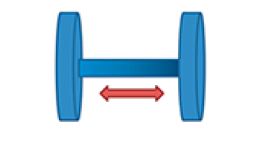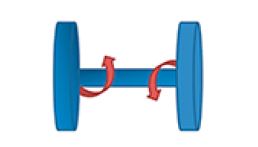Editor’s Note: The technical information below comes from the engine-vibration experts at Fluidampr.
…
Engine vibration accelerates engine wear, breaks engine parts, and robs us of horsepower.
There are three specific types of engine vibration that professional engine builders concentrate on minimizing. Each vibration type has its own method to control it. They are:
1. Unbalanced Vibration

Unbalanced vibration is a weight-imbalance vibration that occurs once per engine revolution. Like the consistent thumping you feel when you lose a wheel weight.
In regards to an engine, even measure and distribution of the rotating assembly weight prevents this.
A balancing service refers to precision matching the pistons, connecting rods, and crankshaft counterweights to minimize unbalanced vibration.
…
2. Axial Vibration

Axial vibration is forward and backward movement of the crankshaft.
The main bearing support plate and thrust bearings are in place to avoid this movement.
…
3. Torsional Vibration

Torsional vibration is the end-to-end twisting and rebounding of the crankshaft caused by combustion.
The harmonic balancer (damper) controls the twist to achieve durability and efficiency. Not all are constructed or function the same.
Fluidampr’s area of expertise is torsional vibration.
…
For Best Results, Know the Difference Between the Vibration Types
Three unique movements of engine vibration. Three completely different ways to control each. It is important to know the differences to understand which parts and services are best for your engine build.
You may hear all three grouped into the general term, engine harmonics.
The Noise, Vibration Harshness (NVH) automotive engineering field also focuses on these vibrations and how it impacts consumer quality.
Terminology nuances can lead to confusion. You can rest easy knowing that managing these three engine vibrations here is a fundamental step to achieving a high quality, long lasting build no matter what it’s called.
NOTE: A balancing service does not remedy torsional vibration. A harmonic balancer only affects unbalanced engine vibration if it contains a counterweight. This is referred to as an external balanced engine. Today the Ford Power Stroke and Chevy Duramax fall into this category. Classic external balanced engines include the Ford Windsor and 454-502 c.i.d. Chevy big blocks.

The more ‘NVH’ you have the cheaper the price tag at the dealer.the only cure for NVH is cubic dollars.ie , rolls royce and upward$$$$
And the 428 SUPER cobra jet only , was and external balanced engine FYI, I consider it a classic, dont you?